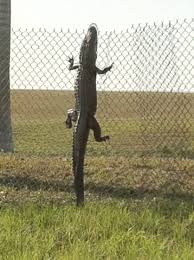Is An Immunization For Stress On The Horizon?

Is an immunization for stress on the horizon?
Can probiotics fend off mood disorders?
It’s too early to say with scientific certainty, but a new study by CU Boulder researchers suggests that one particular beneficial bacteria can have long-lasting anti-inflammatory effects on the brain, making it more resilient to the physical and behavioral effects of stress.
The findings, if replicated in clinical trials could ultimately lead to new probiotic-based immunizations to protect against posttraumatic stress disorder (PTSD) and anxiety or new treatments for depression, the authors say.
“We found that in rodents this particular bacterium, Mycobacterium vaccae, actually shifts the environment in the brain toward an anti-inflammatory state,” said lead author Matthew Frank, a senior research associate in the Department of Psychology and Neuroscience. “If you could do that in people, it could have broad implications for a number of neuroinflammatory diseases.”
Anxiety, PTSD and other stress-related mental disorders impact as many as one in four people in their lifetime. Mounting research suggests that stress-induced brain inflammation can boost risk of such disorders, in part by impacting mood-influencing neurotransmitters like norepinephrine or dopamine.
“There is a robust literature that shows if you induce an inflammatory immune response in people, they quickly show signs of depression and anxiety,” said Frank. “Just think about how you feel when you get the flu.”
Research also suggests that trauma, illness or surgery can sensitize certain regions of the brain, setting up a hair-trigger inflammatory response to subsequent stressors which can lead to mood disorders and cognitive decline.
“We found that Mycobacterium vaccae blocked those sensitizing effects of stress too, creating a lasting stress-resilient phenotype in the brain,” Frank said.
A previous CU Boulder study, found that mice injected with a heat-killed preparation of M. vaccae and then placed with a larger aggressive male for 19 days exhibited less anxiety-like behavior and were less likely to suffer colitis or inflammation in their peripheral tissues. For the new study, published in the journal Brain, Behavior and Immunity, the researchers set out to determine what exactly M. vaccae does in the brain.
Male rats injected with the bacterium three times, one week apart, had significantly higher levels of the anti-inflammatory protein interleukin-4 in the hippocampus — a brain region responsible for modulating cognitive function, anxiety and fear — eight days after the final injection.
After exposure to a stressor, the immunized animals also showed lower levels of a stress-induced protein, or alarmin, called HMGB1, believed to play a role in sensitizing the brain to inflammation, and higher expression of CD200R1, a receptor key for keeping glial cells (the brain’s immune cells) in an anti-inflammatory state. As in the first study, the immunized rats exhibited less anxious behavior after being stressed.
Mood-modulating microbes
“If you look at the field of probiotics generally, they have been shown to have strong effects in the domains of cognitive function, anxiety and fear,” said senior author Christopher Lowry, an associate professor in integrative physiology. “This paper helps make sense of that by suggesting that these beneficial microbes, or signals derived from these microbes, somehow make their way to the hippocampus, inducing an anti-inflammatory state.”
M. vaccae was first discovered on the shores of Lake Kyoga in Uganda in the 1990s by immunologists who realized that people who lived in the area responded better to certain tuberculosis vaccines. They later realized that the bacterium found in the lakeshore soil had immune-modulating properties that were enhancing the vaccine’s efficacy. Researchers set out to study it in lung cancer patients and found that, while it did not prolong life, it somehow improved mood.
M. vaccae is not commercially available but is the subject of numerous ongoing studies.
Lowry, who has been studying it for 17 years, envisions a day when it or another beneficial bacteria could be administered to people at high risk of PTSD – such as soldiers preparing to be deployed or emergency room workers – to buffer the effects of stress on the brain and body. It could also possibly be used to prevent sepsis-induced cognitive impairment, he said.
Meanwhile, he is working with researchers at University of Colorado Denver on a study exploring whether veterans with PTSD can benefit from an oral probiotic consisting of a different bacterial strain, Lactobacillus reuteri.
“More research is necessary, but it’s possible that other strains of beneficial bacteria or probiotics may have a similar effect on the brain,” he said.
More Posts from Ourvioletdeath and Others
mdlksdfsd my fave thing is when ppl outside of florida ask “how do alligators even get in ur pools??? how do they get into ur yards???”

alligators can climb fences. they do this a lot
In a twisted form of a "soulmate" story, people are born in pairs where only their counterpart is able to kill them. If you kill your counterpart, you forfeit your own death and thus become immortal.

Rage
Creative title, right? Probably not to be honest, it sounds like something a hipster would post, or an emotional teenage girl(not being sexist, just providing a cliché example). Nonetheless, I feel rather compelled to put that as the title, mainly because it’s something that I feel pretty often. Not necessarily the anger, but the violent aspect of rage, that nearly uncontrollable violence that builds up inside you, is something that I feel virtually every day. Goodness, I sound so whiny, but I feel like I have to express it somehow or else it’s going to eat away at my emotional health.
I recognize that violence isn’t the answer, but it’s infuriating to be unable to do anything other than think about what you would do to someone who truly deserves to suffer. Of course it sounds rather sociopathic, but there are people to truly need to get whats coming to them from time to time.
It’s hard to describe the feeling I get... it’s a mixture of frustration with anxiety, which produces helplessness and then finally creates the violent urge to hurt someone. I have never done anything under the influence of this urge except for once, which I would rather not get into as I was luckily stopped before things got too far. I learned to control the rage, but the build up of it makes it harder and harder to control. I realized that working out often helps reduce the buildup, but what happens when you don’t have time to work out and you are constantly placed under a lot of stress? Well, you have several options; blow up, take it out on someone, or take a break.
Of course, the most socially acceptable answer is to take a break, which would usually require going out for some fresh air, but in more extreme circumstances it could mean take a day or two off from work or school, and that SUCKS. Taking a day off will just add to your workload afterwards, since you’ll have to make up for the time you lost the last day. Conversely, what would happen if you let your rage out? Well, if you let it out on someone else, you could hurt them, both mentally and physically. And just blowing up could get you kicked out of your workplace, and maybe even sent to jail if things get physical.
So what is there to do? This is a problem that I find myself to be facing rather often, and it always feels like a lose-lose situation. Maybe by talking about it things could get better, but who really wants to hear someone bitch about their life? I personally would find that to be extremely boring, and it might not even work! The way I found to be a good reliever is just to write it out, but its taken me several days to put this all into something concise, a so what happens to those people who don’t have the time? I guess they turn to drugs? I’m not really sure to be honest.
Maybe my point got lost while I was blabbering about this whole thing, but what I meant to emphasize was that stress, rage and anger can easily build up in people, and sometimes there really is just no way to relieve it, which is extremely frustrating to me.
Goodness, I wrote way too much... Oh well, it helped me vent, which I guess was the purpose of this. If anyone ever actually reads this, I hope you’ve enjoyed my rather long rant on rage and anger, and I hope it was somehow beneficial to you, in whatever way that may be.
The best babysitter


other fav character this season tho B)
You are a space traveler from Earth. One day you land on a seemingly advanced planet where the aliens are friendly. You decide to live there and learn their language, and with their technology it takes barely a day. However, you soon offend the wrong person by accident and become arrested. It is decided that your punishment is death, and you are brought a vial of liquid that you are told is of the deadliest kind. Terrified, you drink it only to find out it’s water. Turns out that the very substance keeping you alive is deadly to these creatures. Write what happens following this discovery.


Carl Sagan, who would’ve been 83 today, on the power of books and why reading is essential for democracy.
The bassoon causing new brain disorder
Mutations have been found in the bassoon (BSN) gene, which is involved with the central nervous system, in patients with symptoms similar to, but different from, a rare brain disorder called progressive supranuclear palsy (PSP).
PSP, a form of Parkinson’s disease, is often difficult to diagnose because it can affect people in different ways. Serious problems often include difficulty with walking and balance in addition to a decline in cognitive abilities such as frontal lobe dysfunction.
A team of Japanese researchers investigated patients whose symptoms resembled not only PSP but also Alzheimer’s disease. Despite similarities in the symptoms, detailed pathological analyses showed no resemblance to either disease, which prompted the team to further research the new disease’s underlying mechanism.
They first analyzed the genomes of a Japanese family with several members displaying PSP-like symptoms. They identified a mutation in the BSN gene only in family members with symptoms. These individuals did not have mutations in the 52 other genes associated with PSP and other neurological disorders such as Alzheimer’s and Parkinson’s. This was the first time BSN gene is associated with a neurological disorder.

(Image caption: MRI analysis of a patient with PSP-like symptoms showed severe atrophy of the bilateral hippocampus, mesencephalic tegmentum, cerebellum, and brainstem. Credit: Yabe I. et al., Scientific Reports, January 16, 2018)
The researchers also detected three other mutations in the BSN gene in four out of 41 other patients displaying sporadic, or non-familial, PSP-like symptoms. None of the BSN mutations were detected in a random sample of 100 healthy individuals, underscoring the strong involvement of BSN mutations in the disease.
An autopsy done on one of the family members with the BSN mutation showed an accumulation of a protein called tau in the brain, which is not seen in a normal brain. The researchers believe that the BSN mutation is involved in the tau accumulation, which could cause the development of PSP-like symptoms. An experiment introducing a mutated rat BSN gene to cultured cells also suggested that the mutation causes the accumulation of tau. Communication between nerve fibres could also be affected, as BSN protein play a role in it.

(Image caption: Tau proteins accumulated in the brain of a patient with PSP-like symptoms. Credit: Yabe I. et al., Scientific Reports, January 16, 2018)
“This is a peculiar neurodegenerative disorder which involves mutations in the BSN gene and tau accumulation, but differs from any known disease, including dementia, Parkinson’s, and even PSP,” says Associate Professor Ichiro Yabe of Hokkaido University who led the study. “Patients with PSP-like symptoms and other neurodegenerative disorders should be analyzed for BSN mutations to fine-tune their diagnoses.”
Me
Me 2 seconds after being born
Snakes are so cute though!
Itsy Bitsy Spider: Fear of spiders and snakes is deeply embedded in us
Snakes and spiders evoke fear and disgust in many people. Even in developed countries lots of people are frightened of these animals although hardly anybody comes into contact with them. Until now, there has been debate about whether this aversion is innate or learnt. Scientists at the Max Planck Institute for Human Cognitive and Brain Sciences (MPI CBS) in Leipzig and the Uppsala University have recently discovered that it is hereditary: Babies as young as six months old feel stressed when seeing these creatures—long before they could have learnt this reaction.

Presumably, in Germany most people have never come across a poisonous spider or snake in the wild. Here in this country there are no spiders that pose a threat to humans. Likewise for snakes there are just two species that are indeed poisonous but they are so rare that you hardly ever encounter them. Nevertheless, there are few people that would not shiver at the thought of a spider crawling up their arm, however harmless it may be.
This fear can even develop into anxiety which limits a person’s daily life. Such people are always on edge and cannot enter a room before it is declared “spider free” or cannot venture out into nature for sheer fear that they may encounter a snake. In developed countries one to five per cent of the population are affected by a real phobia of these creatures.
Until now, it was not clear where this widespread aversion or anxiety stems from. While some scientists assume that we learn this fear from our surroundings when we are a child, others suppose that it is innate. The drawback of most previous studies on this topic was that they were conducted with adults or older children—making it hard to distinguish which behaviour was learnt and which was inborn. Such studies with children only tested whether they spot spiders and snakes faster than harmless animals or objects, not whether they show a direct physiological fear reaction.
Scientists at the Max Planck Institute for Human Cognitive and Brain Sciences (MPI CBS) in Leipzig and the Uppsala University, Sweden, recently made a crucial observation: Even in infants a stress reaction is evoked when they see a spider or a snake. And this already at the age of six months, when they are still very immobile and have had little opportunity to learn that these animals can be dangerous.
“When we showed pictures of a snake or a spider to the babies instead of a flower or a fish of the same size and colour, they reacted with significantly bigger pupils”, says Stefanie Hoehl, lead investigator of the underlying study and neuroscientist at MPI CBS and the University of Vienna. “In constant light conditions this change in size of the pupils is an important signal for the activation of the noradrenergic system in the brain, which is responsible for stress reactions. Accordingly, even the youngest babies seem to be stressed by these groups of animals.”
“We conclude that fear of snakes and spiders is of evolutionary origin. Similar to primates, mechanisms in our brains enable us to identify objects as ‘spider’ or 'snake’ and to react to them very fast. This obviously inherited stress reaction in turn predisposes us to learn these animals as dangerous or disgusting. When this accompanies further factors it can develop into a real fear or even phobia. "A strong panicky aversion exhibited by the parents or a genetic predisposition for a hyperactive amygdala, which is important for estimating hazards, can mean that increased attention towards these creatures becomes an anxiety disorder.”
Interestingly, it is known from other studies that babies do not associate pictures of rhinos, bears or other theoretically dangerous animals with fear. “We assume that the reason for this particular reaction upon seeing spiders and snakes is due to the coexistence of these potentially dangerous animals with humans and their ancestors for more than 40 to 60 million years—and therefore much longer than with today’s dangerous mammals. The reaction which is induced by animal groups feared from birth could have been embedded in the brain for an evolutionarily long time.
For modern risks such as knives, syringes or sockets, presumably the same is true. From an evolutionary perspective they have only existed for a short time, and there has been no time to establish reaction mechanisms in the brain from birth. "Parents know just how difficult it is to teach their children about everyday risks such as not poking their fingers into a socket”, Hoehl adds with a smile.
-
 pleasurehunter2000 liked this · 4 years ago
pleasurehunter2000 liked this · 4 years ago -
 groochi-gang liked this · 5 years ago
groochi-gang liked this · 5 years ago -
 retropearls liked this · 6 years ago
retropearls liked this · 6 years ago -
 igzt liked this · 6 years ago
igzt liked this · 6 years ago -
 drakchaurasia-blog liked this · 6 years ago
drakchaurasia-blog liked this · 6 years ago -
 zenith5 liked this · 6 years ago
zenith5 liked this · 6 years ago -
 ocean-light reblogged this · 6 years ago
ocean-light reblogged this · 6 years ago -
 mindofamedic-blog1 reblogged this · 6 years ago
mindofamedic-blog1 reblogged this · 6 years ago -
 darkgladiatorballoon-blog reblogged this · 6 years ago
darkgladiatorballoon-blog reblogged this · 6 years ago -
 cinflaverin reblogged this · 6 years ago
cinflaverin reblogged this · 6 years ago -
 sbgyatso reblogged this · 6 years ago
sbgyatso reblogged this · 6 years ago -
 astraldepths liked this · 6 years ago
astraldepths liked this · 6 years ago -
 osteopathicmedminerva reblogged this · 6 years ago
osteopathicmedminerva reblogged this · 6 years ago -
 doofenshmirtzexperiments liked this · 6 years ago
doofenshmirtzexperiments liked this · 6 years ago -
 djbl0nde reblogged this · 6 years ago
djbl0nde reblogged this · 6 years ago -
 djbl0nde liked this · 6 years ago
djbl0nde liked this · 6 years ago -
 ittakesforevertohavefaith liked this · 6 years ago
ittakesforevertohavefaith liked this · 6 years ago -
 littlesoybean reblogged this · 6 years ago
littlesoybean reblogged this · 6 years ago -
 strawberryserotonin reblogged this · 6 years ago
strawberryserotonin reblogged this · 6 years ago -
 outerspacegalalien liked this · 6 years ago
outerspacegalalien liked this · 6 years ago -
 sprinkeled-doughnuts liked this · 6 years ago
sprinkeled-doughnuts liked this · 6 years ago -
 royalarcturus liked this · 6 years ago
royalarcturus liked this · 6 years ago -
 confessionsofbirthmothers liked this · 6 years ago
confessionsofbirthmothers liked this · 6 years ago -
 nessiemonster88 liked this · 6 years ago
nessiemonster88 liked this · 6 years ago -
 cameoappearance liked this · 6 years ago
cameoappearance liked this · 6 years ago -
 landofmazesandinsight liked this · 6 years ago
landofmazesandinsight liked this · 6 years ago -
 shrksmile reblogged this · 6 years ago
shrksmile reblogged this · 6 years ago -
 ausieworld reblogged this · 6 years ago
ausieworld reblogged this · 6 years ago -
 devil-with-a-soul reblogged this · 6 years ago
devil-with-a-soul reblogged this · 6 years ago -
 kyidyl reblogged this · 6 years ago
kyidyl reblogged this · 6 years ago -
 doublecatdarren liked this · 6 years ago
doublecatdarren liked this · 6 years ago -
 whispersofeternalmoonmist liked this · 6 years ago
whispersofeternalmoonmist liked this · 6 years ago -
 tardigrado213 liked this · 6 years ago
tardigrado213 liked this · 6 years ago -
 osteopathicmedminerva reblogged this · 6 years ago
osteopathicmedminerva reblogged this · 6 years ago -
 thusspakejasminefofazmine reblogged this · 6 years ago
thusspakejasminefofazmine reblogged this · 6 years ago -
 thusspakejasminefofazmine reblogged this · 6 years ago
thusspakejasminefofazmine reblogged this · 6 years ago -
 littlewillow liked this · 6 years ago
littlewillow liked this · 6 years ago -
 doublecatdarren reblogged this · 6 years ago
doublecatdarren reblogged this · 6 years ago -
 jacquelinebrixjacky liked this · 6 years ago
jacquelinebrixjacky liked this · 6 years ago -
 darkandstormyy liked this · 6 years ago
darkandstormyy liked this · 6 years ago -
 serpentascending liked this · 6 years ago
serpentascending liked this · 6 years ago